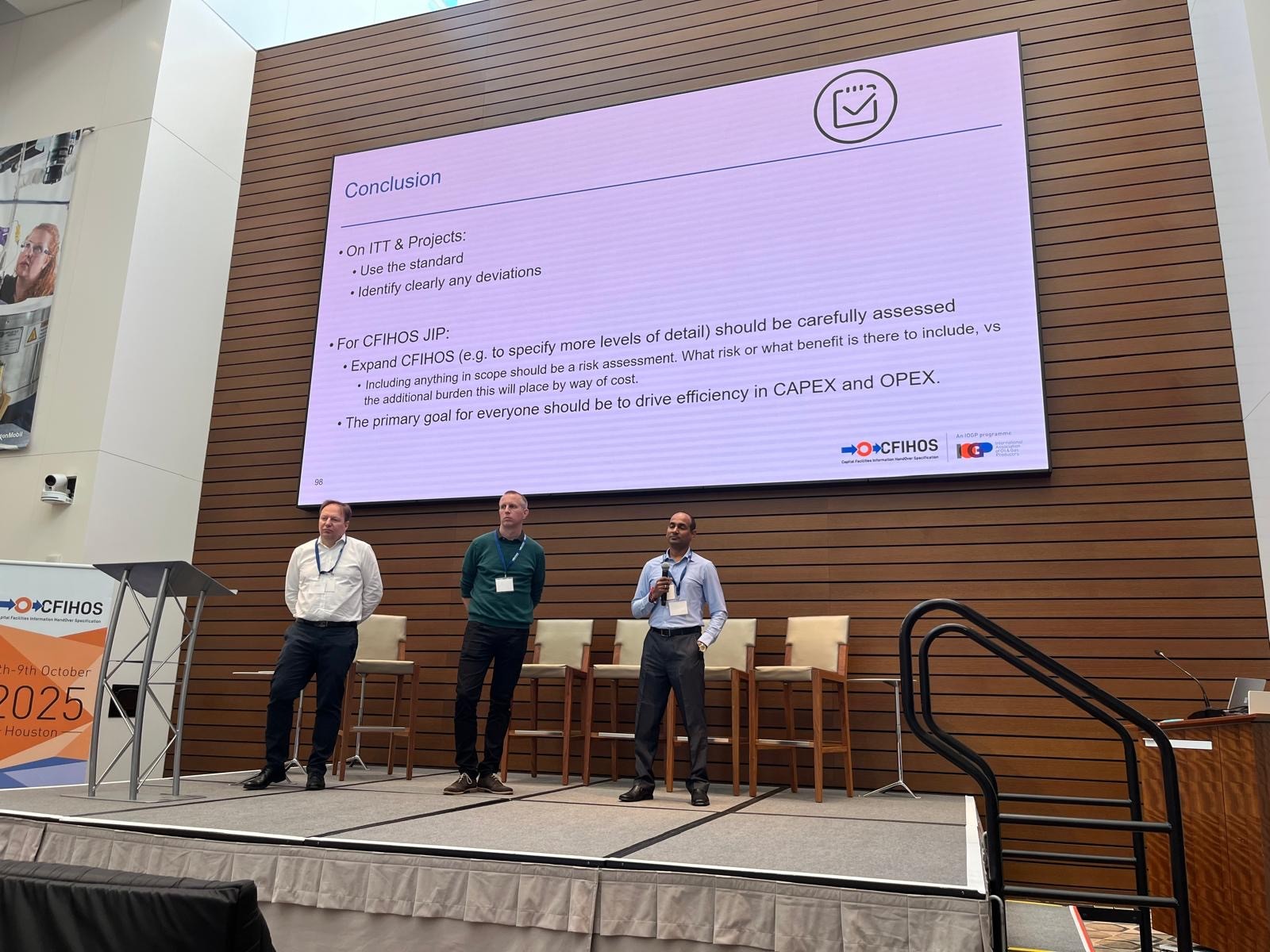
Although the group working with and using CFIHOS is growning year on year, many organisations do not yet know what it is, and importantly how they can use it to simplify and improve information handling. The Capital Facilities Information Handover Specification (CFIHOS), is a joint industry practice developed by a working group of Owner/Operators, EPC Contractors, Suppliers and Software Providers, under the guidance by the International Association of Oil & Gas Producers (IOGP). It is a conceptual data model that can be used as a standard framework for structured, standardised documentation and data to meet the requirements for operation of complex industrial facilities.
By enabling a common framework, CFIHOS can be utilised as a foundation for data interoperability and digital collaboration across the entire asset lifecycle. Importantly it can be applied retrospectively as a framework for cleansing and improving existing facility data to improve governance and compliance.
Sharecat is one of the longest participating members of the CFIHOS working group, our team actively participate and contribute to the development of the standard and the CFIHOS community. In particular contributing directly to the Reference Data Library (RDL) working group.
A core element of the approach for implementing CFIHOS is the ability to take the core standard and model, and adapt if for your needs. This means either adding new classes and fields i.e. creating your own "CFIHOS+", and/or removing classes and fields that are not relevant for you, e.g. an onshore application doesn't need subsea equipment to be defined, this is known as "CFIHOS-".
Knowing what parts of CFIHOS are, and are not relevant for you, and how to adapt the core standard to meet your needs is something that Sharecat Data Services helps with.
The first step for any data cleansing, enrichment or improvement process is to ensure the data has a uniform structure applied. Often this is not the case, which results in the need to standardise and normalise the data as the first step. This is where standards and approaches such as CFIHOS can be utilised as the underlying model for structuring and normalising data.
CFIHOS is only one approach, and the core CFIHOS data model may require additional fields to be added to meet your needs (known as CFIHOS+). The strength that CFIHOS offers is that it gives many companies who lack a common structure a head start by using a ready to go model that covers 80% to 90% of their needs.
Thanks to our deep involvement in CFIHOS, we can quickly evaluate whether CFIHOS is a good approach for you and ensure you are using the latest developments to be aligned. In this way Sharecat bridges theory and implementation —helping customers achieve consistent, high-quality data throughout the asset lifecycle.
The CFIHOS 2025 Annual Meeting took place in Houston, Texas, hosted at the ExxonMobil campus, and gathered over 150 participants from operators, EPCs, OEMs,software vendors, and regulators.
This year’s meeting marked a strategic shift — from handover to harmonisation —focusing on how CFIHOS+ supports interoperability, automation, and alignment between industry standards such as JIP33, PIP, and ISO 8000.

A major priority discussed was expanding engagement across the EPC and supplier ecosystem.
As operators demand consistent data delivery, EPCs and OEMs are aligning equipment,line, and instrument lists using the CFIHOS model — reducing rework, improving quality, and enabling reuse of information across projects.
Several sessions showcased how knowledge graphs and semantic data relationships are driving the next step in digital engineering.
By linking information based on meaning rather than structure, through a semantic ready CFIHOS enables machine-readable interoperability, supporting smarter analytics, automation, and digital twins. This is something that the working group focused on semantic modelling are deeply involved with, but it remains work in progress.
The CFIHOS Semantics Working Group (WG) presented progress on using W3C-based frameworks such as RDF, SKOS, and OWL.
These tools strengthen interoperability and allow different systems to recognise shared entities — for example, understanding that “electric motor”and “drive unit” refer to the same concept.
The community announced improvements to its governance structure, including smaller, agile delivery squads for faster iteration and clearer accountability.
This ensures that the RDL evolves in step with real-world engineering needs and technology trends.
Participants highlighted the importance of
Despite the challenges, there was strong consensus that CFIHOS holds great potential for a common approach that will achieve consistent and reliable information across organisations resulting in major savings for industry as a whole.
Real-world examples reinforced that CFIHOS is being implemented successfully by more and more companies, primarily in oil and gas:
These case studies proved that when properly applied, CFIHOS delivers tangible business value through improved data quality, governance, and efficiency.

By combining semantic technologies, cross-standard collaboration, and software conformance, CFIHOS+ is becoming the common language for defining, collecting and using documents and data for future ready operations.
For companies like Sharecat, this evolution reinforces the commitment to information quality and structure as the core foundation to enable new ways of working — ensuring that complex data is valuable and truly understood.
